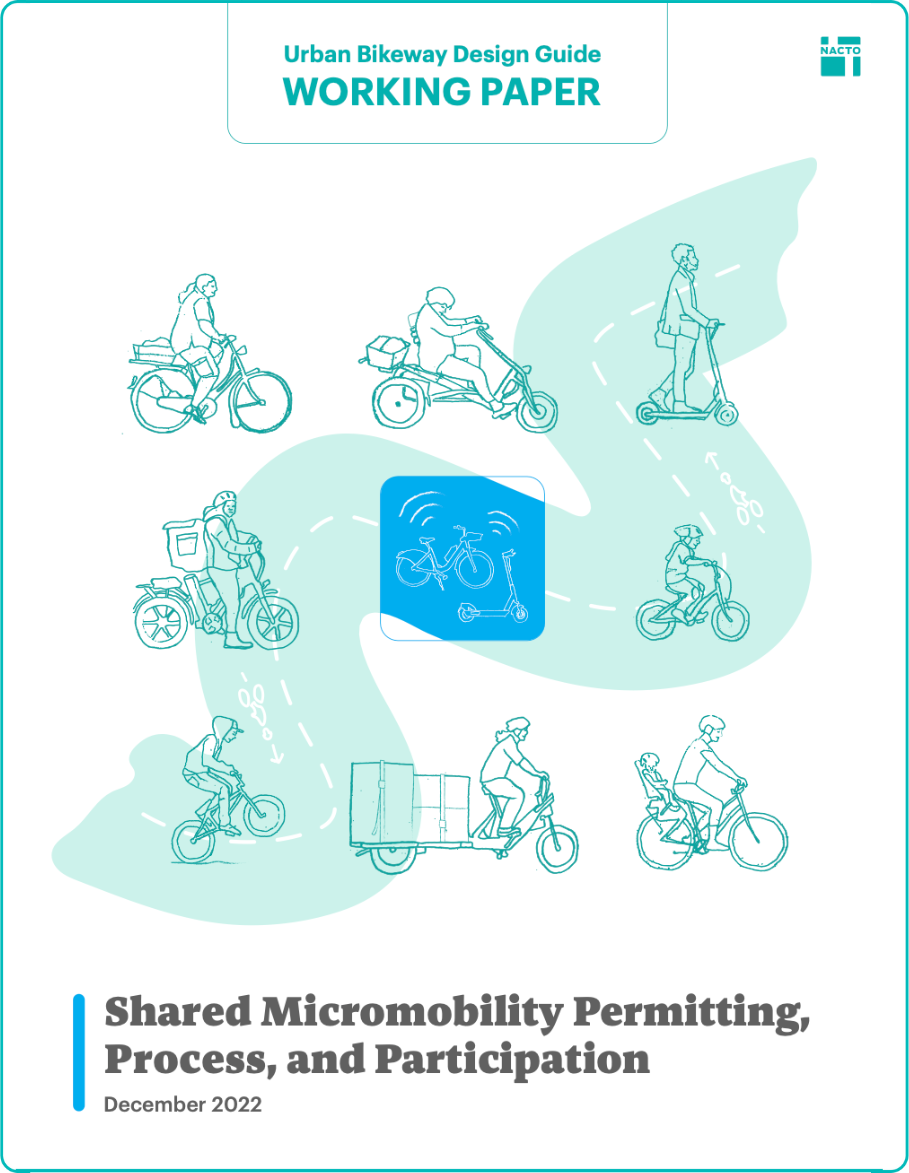
NACTO’s working paper Shared Micromobility Permitting, Process, and Participation outlines emerging trends in how cities manage micromobility networks, including the growth of electrified devices, the selection of operators based on strategic goals, and regulations to better organize devices. The paper also offers cities tactics for making systems more equitable and effective, from creating collaborative planning processes to investing in bike infrastructure and piloting low-speed zones for vehicle traffic.
NACTO’s Guidelines for Regulating Shared Micromobility outlines best practices for cities and public entities regulating and managing shared micromobility services on their streets. Its recommendations were developed to reflect the wide variety of experiences that North American cities have had in regulating and managing shared micromobility.
Strategies for Engaging Community, produced in coordination with the Better Bike Share Partnership, provides guidance for practitioners seeking to build meaningful relationships with communities they serve as they plan for and operate bike share systems.
A local partnership between Bedford Stuyvesant Restoration, NYC DOT, the NYC Department of Health, and Motivate successfully changed perceptions on bike share in the community, from what some perceived to be an out-of-reach amenity for newer residents, to a tool that all residents can use to meet their own personal goals.
NACTO’s Bike Share Intercept Survey Toolkit gives detailed instructions and a bank of over 100 pre-tested questions for creating and carrying out methodologically sound on-the-street surveys, allowing you to learn more about the needs and attitudes of all members of your community.
Bike share can improve the pedestrian experience, help reduce traffic fatalities, and reduce inequity in cities’ transportation networks. To support cities across the country working towards all of these goals, NACTO has released the NACTO Bike Share Siting Guide, which highlights best practices in station placement and design.
Equity Practitioners’ Papers
Based on an analysis of ridership data from a variety of U.S. bike share systems, this report makes the connection between station density, service quality and equity, and provides a data-driven analysis for system operators looking to expand the reach and utility of their bike share systems.
This paper explores the impact of bike share pricing structures on sign-up rates, particularly in low-income communities.
Based on in-house research and analysis of other reports, this paper finds that as cities build more bike lanes, the number of cyclists on the street increases, and the individual risk of a cyclist being killed or severely injured drops.